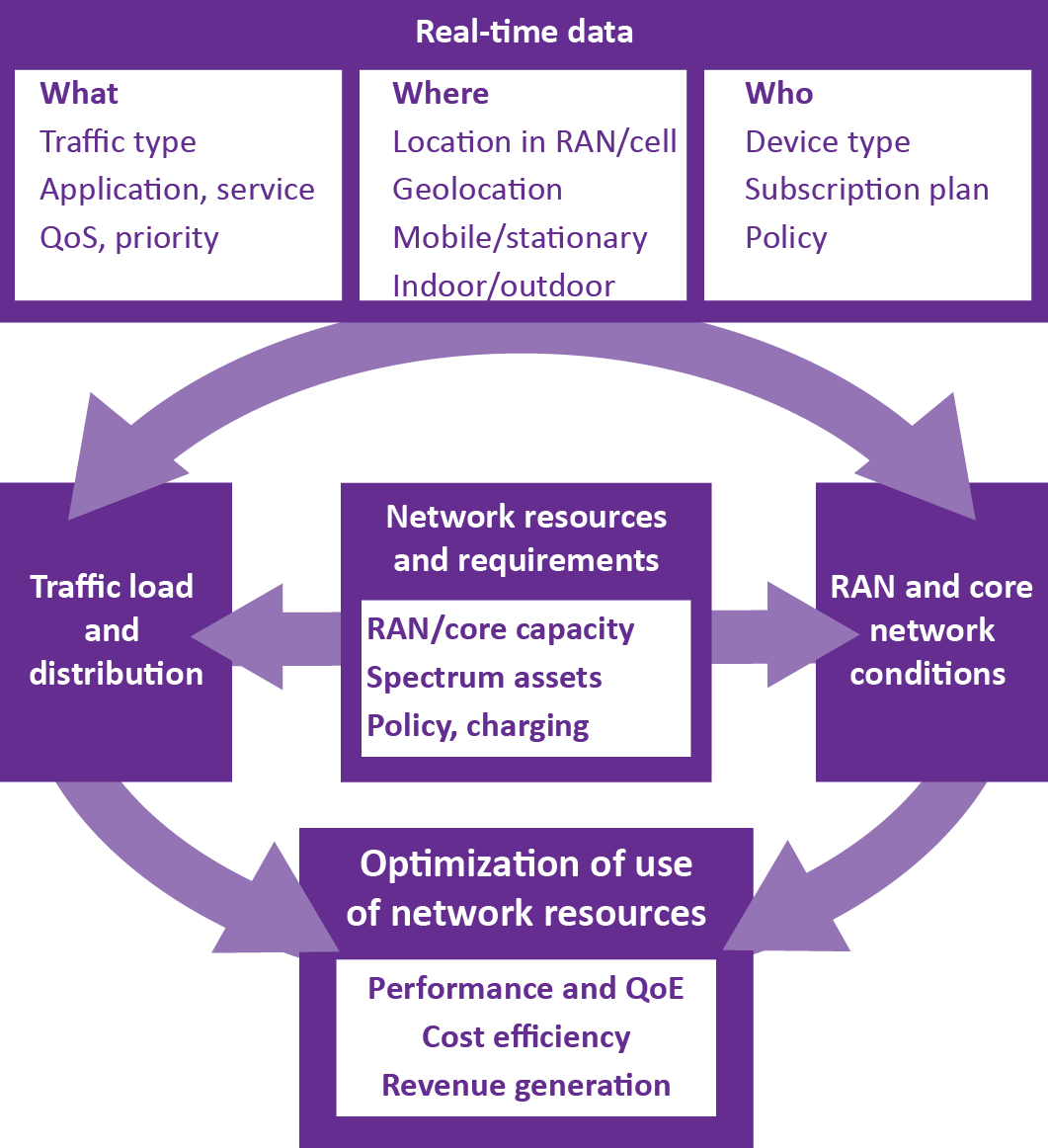Mobile operators have to increase capacity to meet traffic loads that continue to grow, but they need to do so in a way that is cost-efficient, improves the performance and QoE, and allows them to create revenue opportunities. To achieve this, they also have to at the same time optimize the way they use network resources.
This is a tall order as mobile subscribers increasingly rely on wireless networks to watch more videos, connect more devices and, generally, use their mobile devices as the main gate to any type of voice and data connection. Any additional capacity brought by more spectrum or more advanced technology is quickly absorbed by existing subscribers as soon as they realize the network is faster or has better coverage, and they start using it more frequently and for services that require more bandwidth, such as video streaming.
In this context, just adding capacity may become a self-defeating exercise that drives up usage and costs, but not revenue, and that fails to deliver a consistent quality of experience while some network assets remain underused. To avoid this situation, mobile operators have started to look at ways to manage traffic more actively. To do so effectively, they need to use real-time information about their networks and their subscribers. They need to know what traffic they are carrying, where they are delivering it, and to which subscribers and devices.
Once they have extracted relevant real-time data, operators have to match it against their network resources – primarily radio access networks, core infrastructure and spectrum assets – and their strategy for traffic management – as reflected, for instance, in their policy and charging frameworks – to determine what the network conditions are and how the traffic is flowing through their networks. In turn, this information allows them to detect ways to optimize the use of network resources to improve performance, QoE, cost efficiency and revenue generation.
For a long time, mobile operators have resisted using real-time data as an optimization and revenue-generating tool, as that was deemed to be a task too complex to be worth the effort. At the same time, network equipment and traffic management solutions did not offer sufficient support for real-time operations. With the recent urgency in increasing network efficiency, real-time network management is becoming a widely accepted, top-of-mind goal for operators, and an area of intense activity among vendors.
The timing is good. Real-time traffic management in all its aspects – from the RAN all the way to the core – is starting to gain a hold at the same time as virtualization, and the two complement each other. A virtualized network is one that allocates hardware resources in real-time. Mobile operators require that many of the new virtualized solutions operate in real time, pushing vendors to strengthen their real-time capabilities.
Mobile operators have direct access to real-time data and they have always used it to some extent. To route voice calls, operators need to know where the devices are. They need real-time charging for prepaid accounts. Yet, to use real-time data across the network to manage how they deliver services – and how to prioritize them, when resources are insufficient – is a dauntingly complex task.
Operators need more than just access to the data – they need to structure it in a way that they can analyze it and act on it. They have to harness huge volumes of data to extract what they need. They need solutions in place that can analyze this information for traffic optimization, application management and policy. They need to add flexibility to their networks so they can react and change the way they work in real time.
They also have to decide where the increased complexity that real-time processing adds leads to direct cost savings or performance improvements – and where it does not. And if they want to use real-time data for a specific function, what is the best way to use it? Which data sources are relevant? At which depth should they analyze the data to minimize the processing overhead while preserving its effectiveness?
The growing enthusiasm to use real-time data actively in running mobile networks fits well within the increasingly dynamic architecture of wireless networks, but we are only at the very beginning in exploring and deploying real-time solutions. There is still much to learn to find out what data deliver value, and what data only add noise and complexity. But this is a path we have to follow to squeeze out as much value – in terms of performance and revenue – from the existing network resources.
Editor’s Note: Welcome to Analyst Angle. We’ve collected a group of the industry’s leading analysts to give their outlook on the hot topics in the wireless industry.


